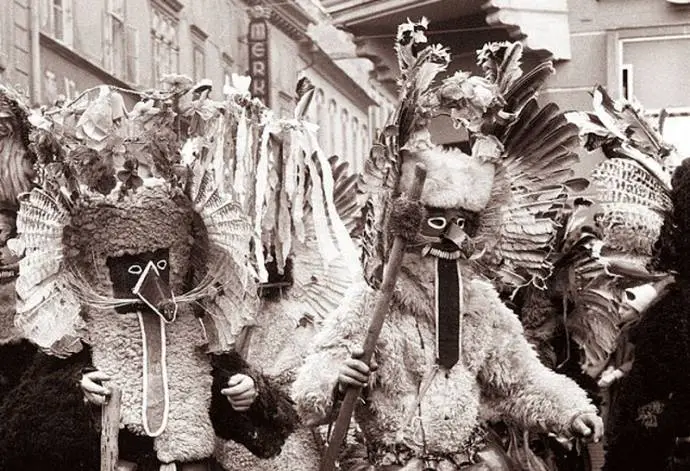February 3, 2018
It’s that time of year when one’s fancy turns to Pust, and the licence to dress up like a loon and engage in the kind of business you’d rather not do with your own face (as noted in our guide to this year's festivities).
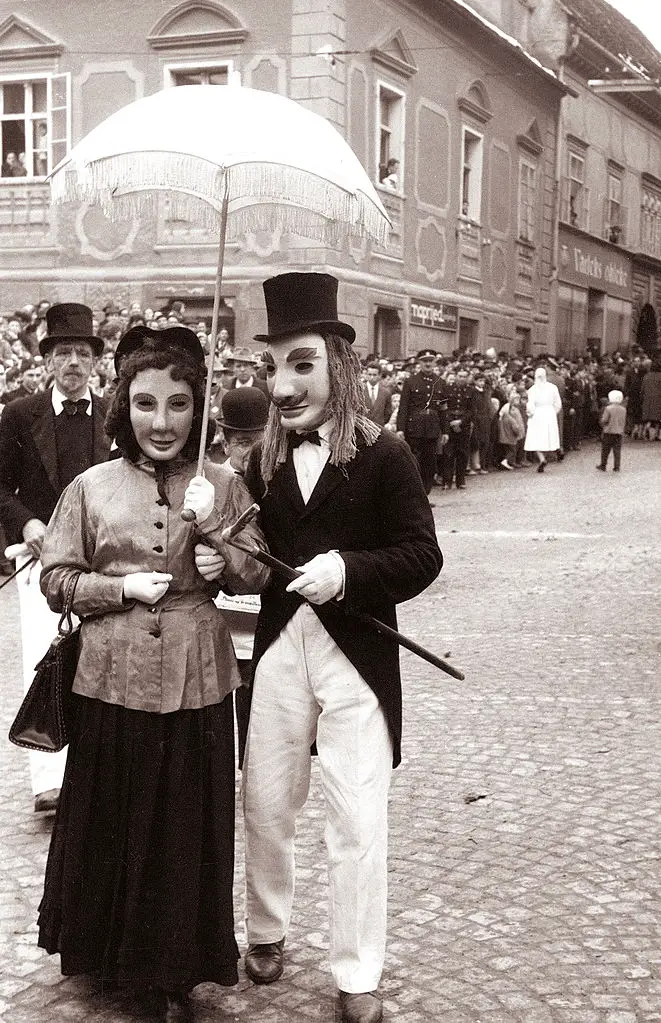
Wikimedia: Ptuj, 1962
While some celebrate this festival to chase away the winter with more Halloween-like costumes, others go back to a pagan past and draw on more powerful imagery, as the repressed returns to the land and the Lord of Misrule lets his kingdom run wild.
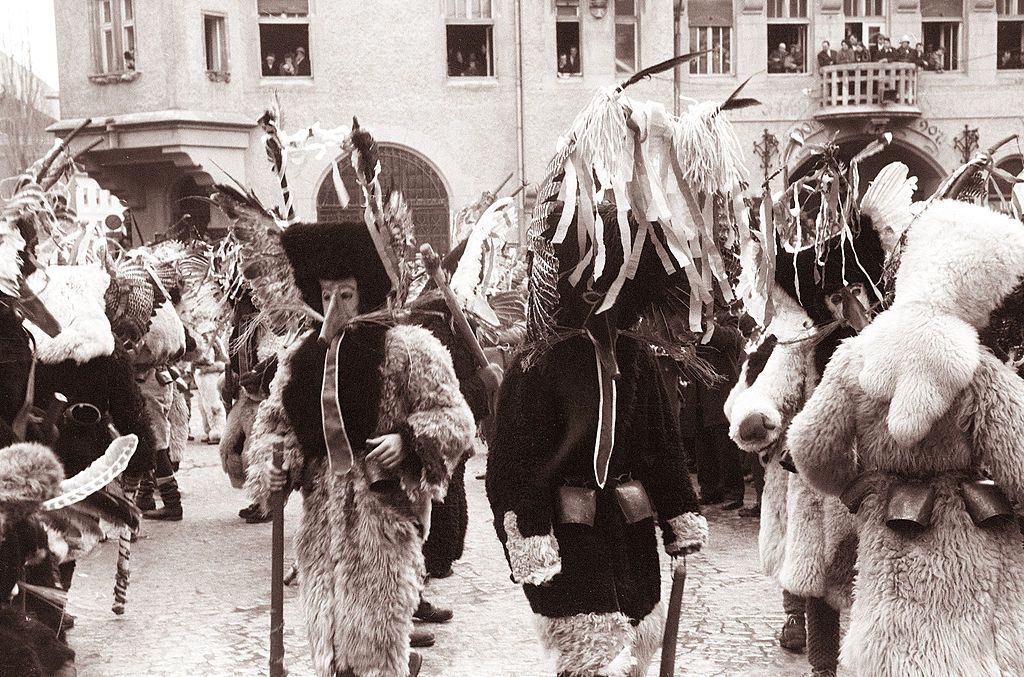
Wikimedia: Ptuj, 1962
Most famous of these events is the Kurentovanje at Ptuj, with its striking kurenti. These sheepskin-dressed figures are now safely on the UNESCO World Heritage list and part of the public face of Slovenia, but were once less respectable, and more closely associated with the god of merriment and wine in Slavic mythology, and the resulting riotous fertility.
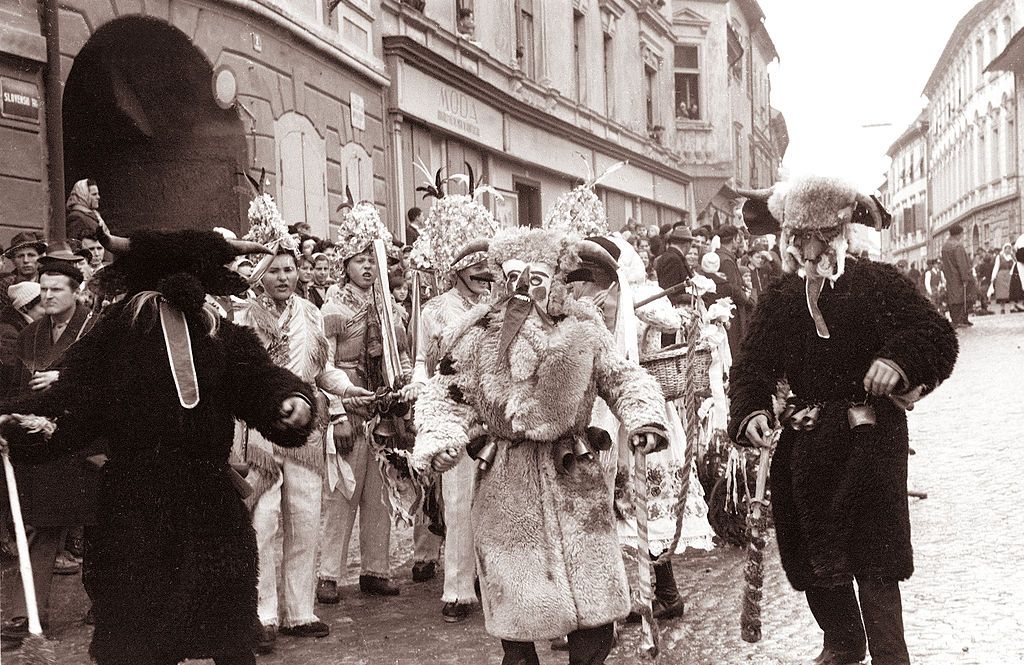
Wikimedia: Ptuj, 1962
Slavko Ciglenečki’s “Late Traces of the Cults of Cybele and Attis. The Origins of the Kurenti and of the Pinewood Marriage (Borovo Gostuvanje)”, published in Studia Mythologica Slavica in 1999 and available as a PDF here, comes to the following conclusion on the origins of this festival, one perhaps even more interesting if you, like me, have no idea of the veracity of his claims:
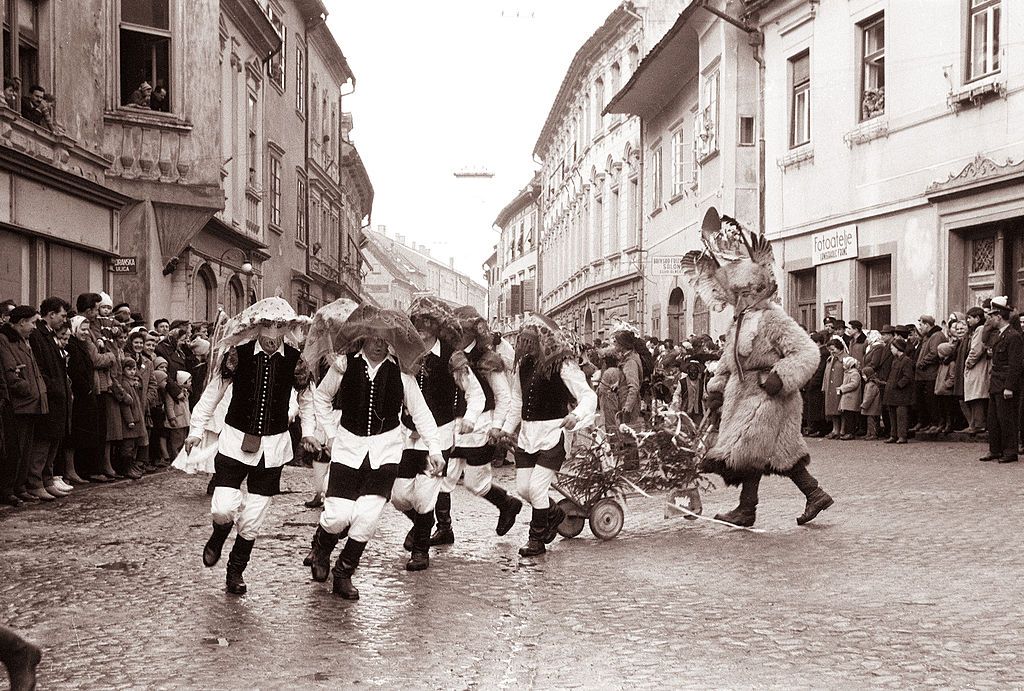
Wikimedia: Ptuj, 1962
“Let us briefly summarize our conclusions: the kurenti are part of the heritage pertaining to the Great Mother who was worshipped in the area of present-day Slovenia - and likewise throughout the Roman empire - for centuries. During the celebrations dedicated to Cybele, her male worshippers recreated the mythical event of driving winter away by dancing ecstatically and by creating a tremendous racket thus enabling the arrival of new life.”
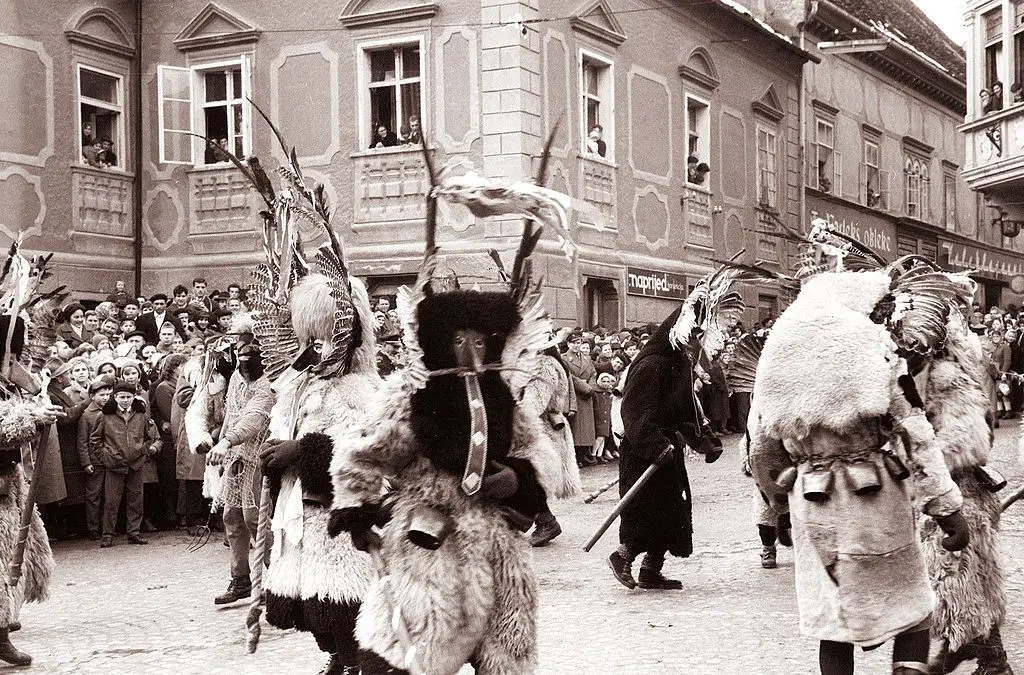
Wikimedia: Ptuj, 1962
“Their noisy behaviour is reflected in the behaviour of the mythic carriers of the cult of the Kuretes and the Koribantes who, accompanied by the goddess, roamed the forests looking for Attis and made noise in order to wake up the sleeping god, namely the sleeping vegetation.”
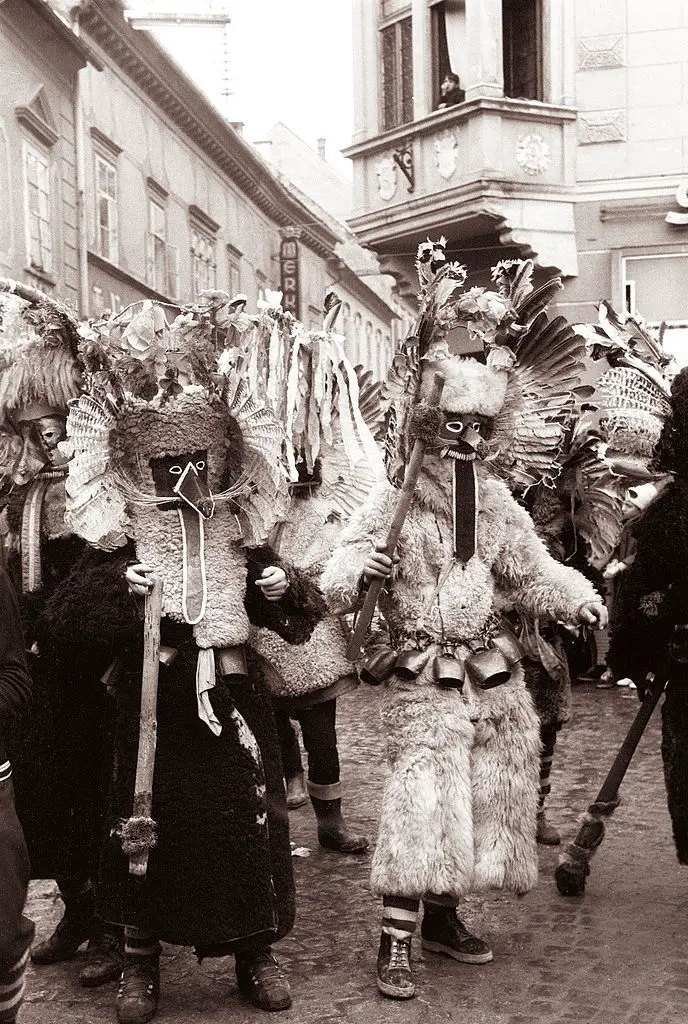
Wikimedia: Ptuj, 1962
“And Borovo gostüvanje reflects the memory of the ritual performed by Cybele’s worshippers during the March celebrations dedicated to the cult of Cybele; they cut down a pine tree, symbolically performing the death of Attis, in order to celebrate his revival and his uniting with the Great Mother in the following days.”
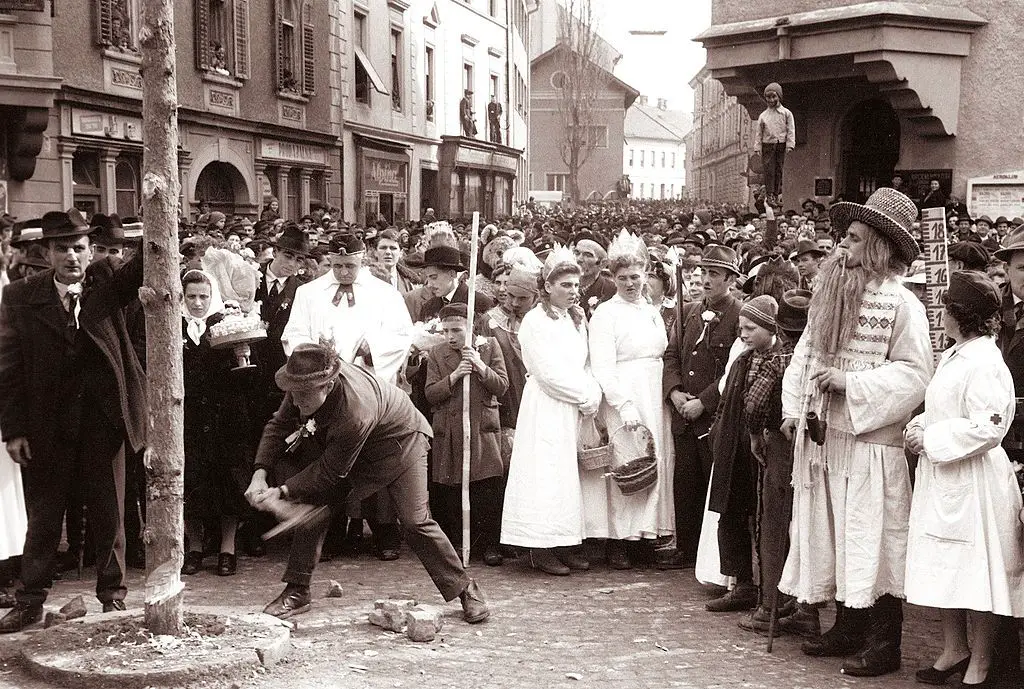
Wikimedia: Ptuj, 1962
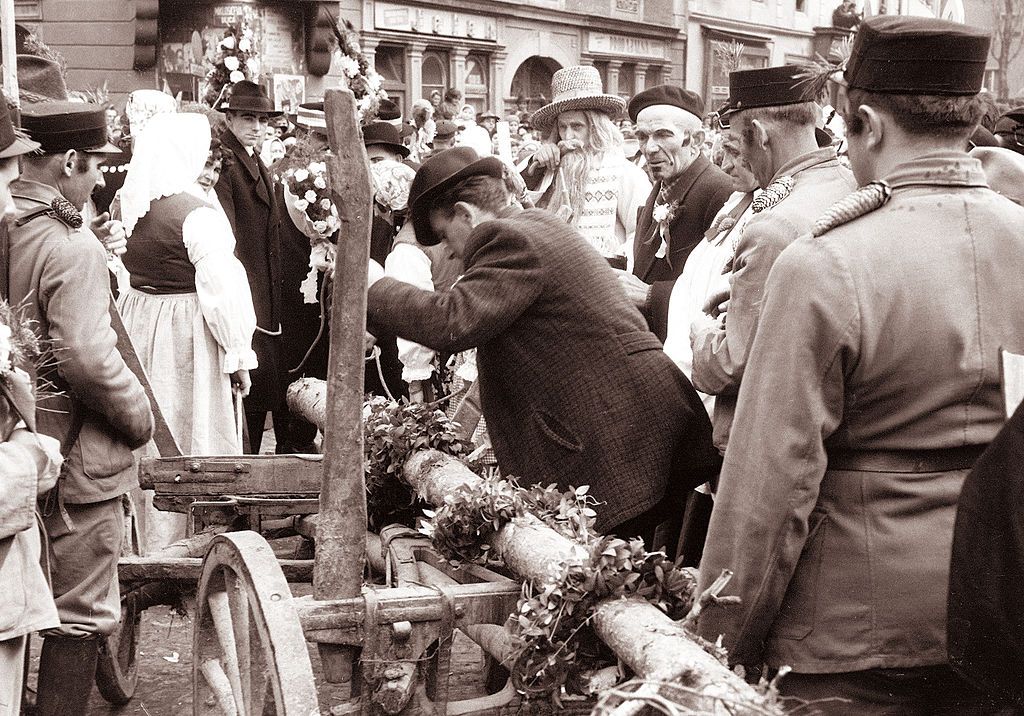
Wikimedia: Ptuj, 1962
“The connection with the survival of the last significant pagan cult in our territory and the fragmentary traces of the late tradition in the neighbouring regions signify that the memory of the cult of the Great Mother has persevered much longer than we had imagined, especially in hidden and remote areas where isolated groups of the old population survived.”
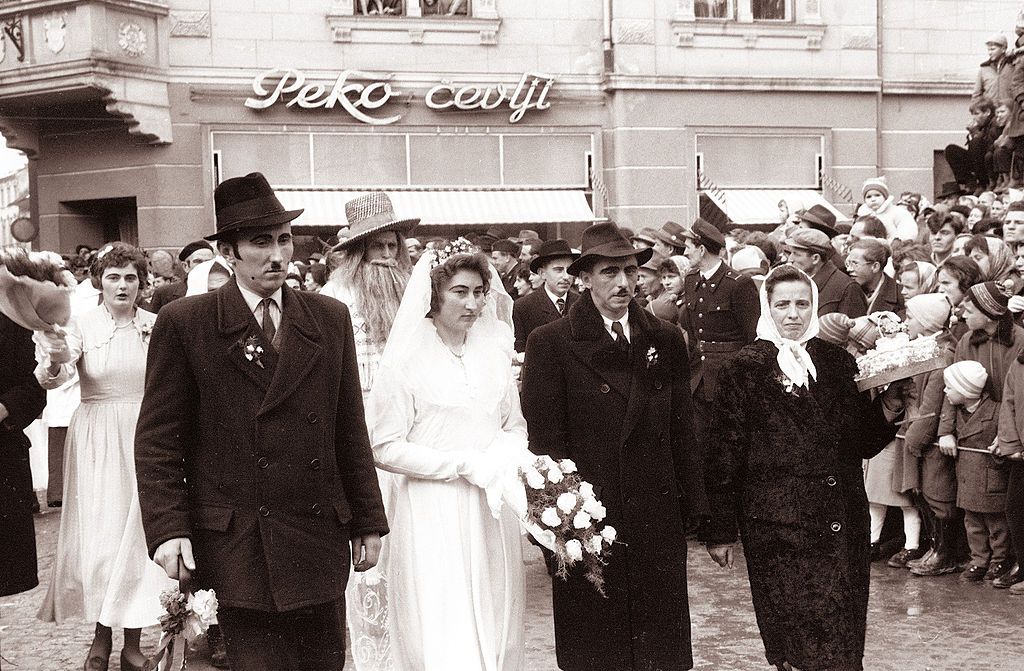
Wikimedia: Ptuj, 1962
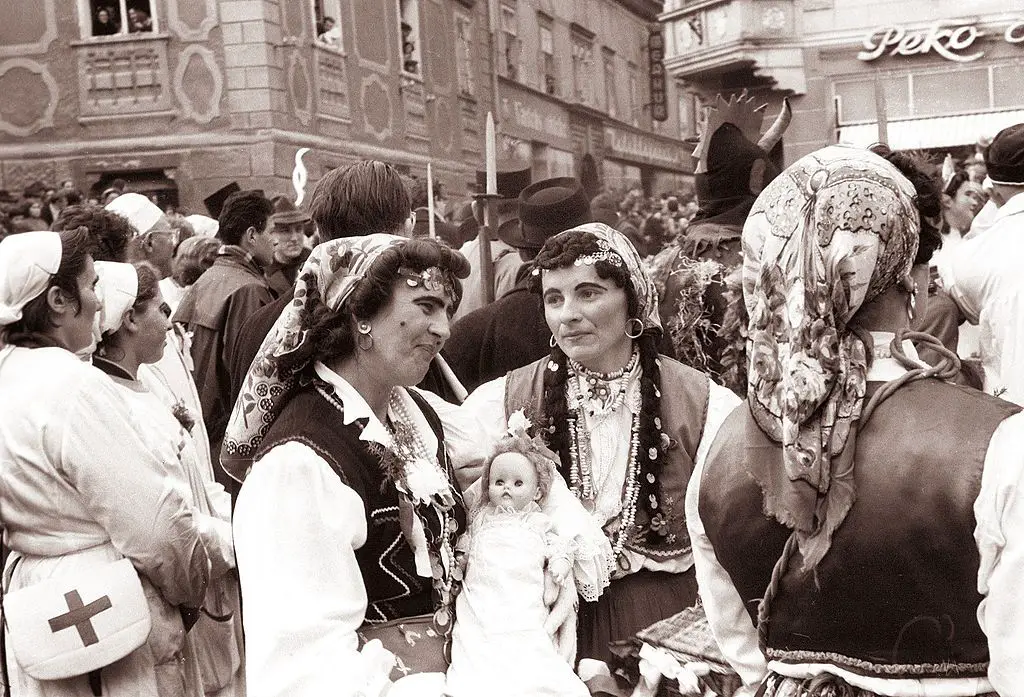
Wikimedia: Ptuj, 1962
“Elements of the old Eurasian cult have endured - albeit only as masks and carnival customs - to the present. They represent the remarkably interesting heritage of a time long gone - a connection with antiquity, alive even today.” (Full article here.)
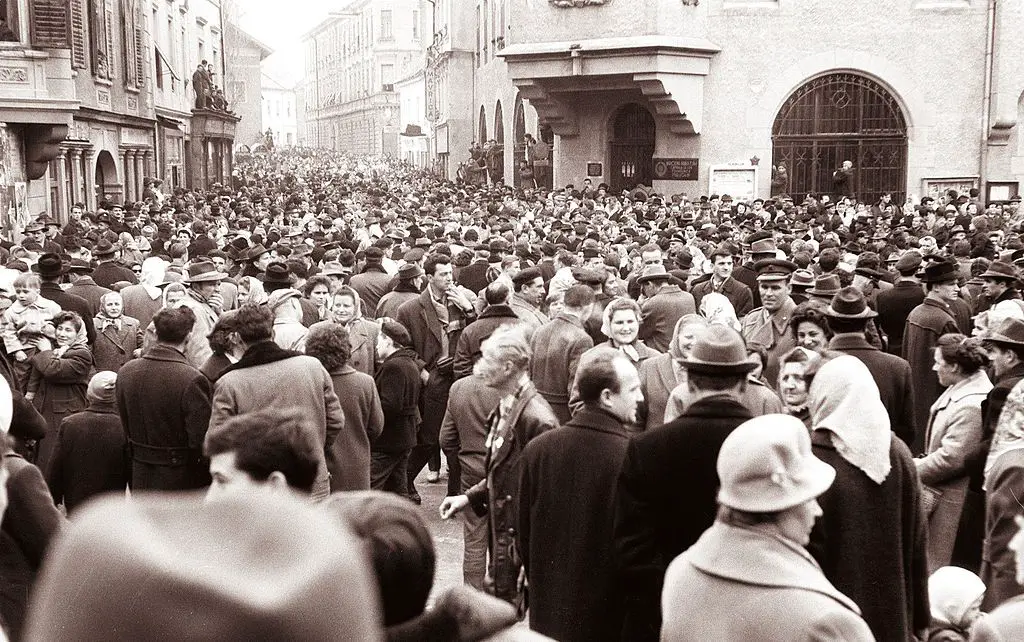
Wikimedia: Ptuj, 1962
But what of the kurent? One story claims the first was a man so handsome women wouldn’t leave him alone, so he begged God to turn him into a monster. His wish thus granted the women left him in peace, but then started celebrating this time of year with a party in remembrance of the man’s lost good looks.
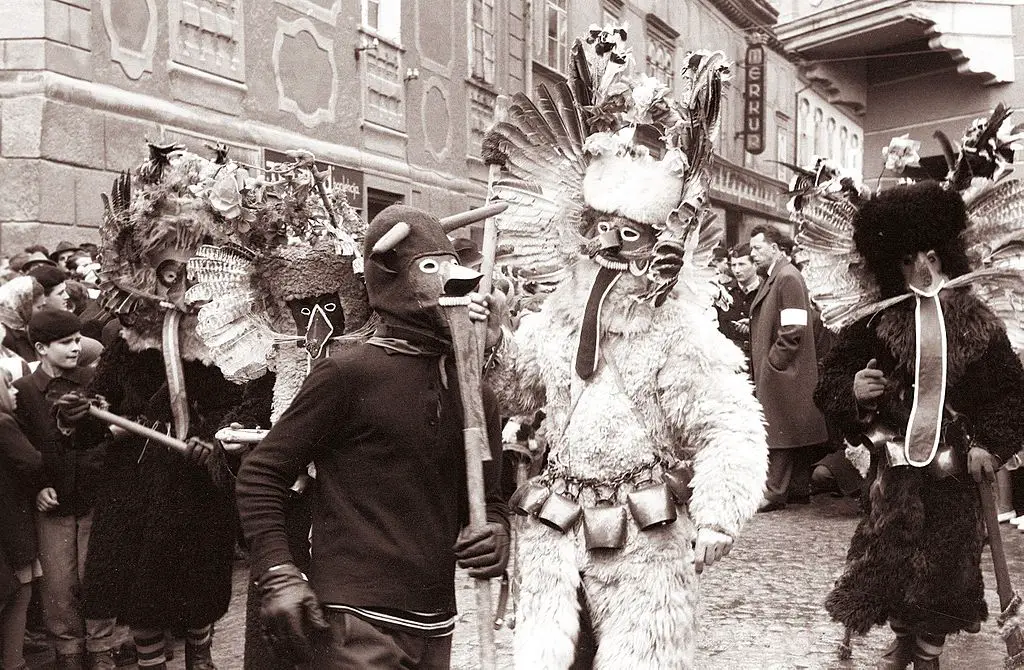
Wikimedia: Ptuj, 1962
Indeed, one thing to note is that until recently all those who dressed up as kurenti were young bachelors, but nowadays the event is open to everyone – women, children, married men and the divorced, although once inside a costume it’s impossible to know who is who, or what they think behind the mask. A time of free association and play.
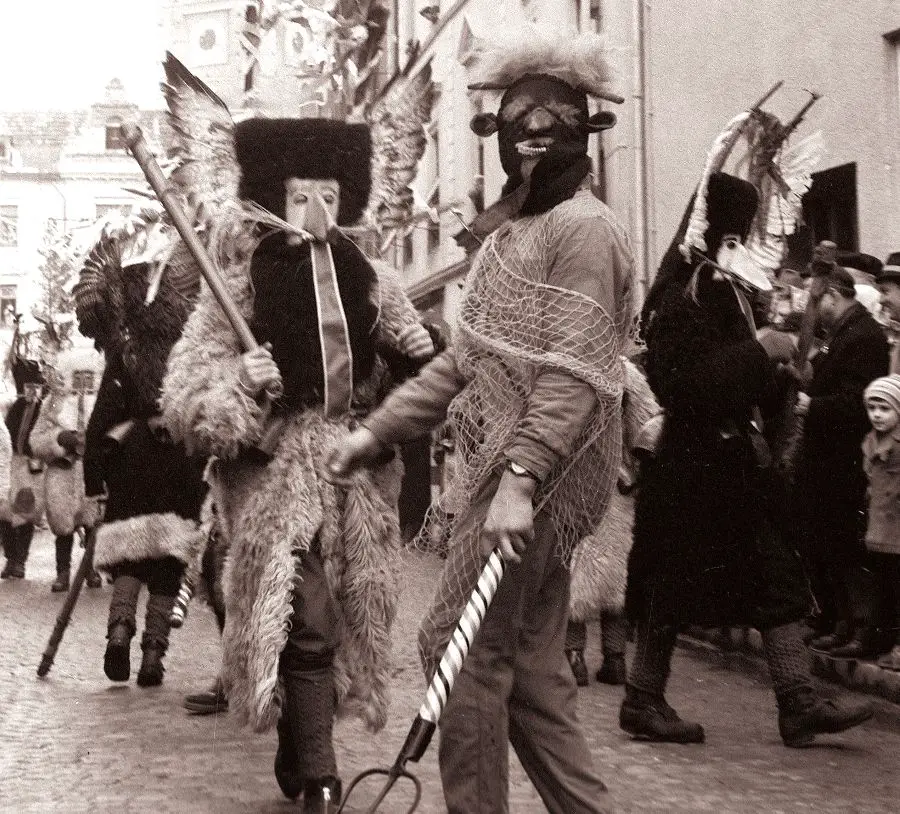
Wikimedia: Ptuj, 1962
The images here, all from Ptuj in 1962, show this carnival is not something whipped up in the last decade or so for the tourists, but an occasion that generations have enjoyed, in huge crowds and with a sense of danger and excitement. A time when anything could happen, when a mortal could put on the skin of a god, get blazing drunk, wake up with a stranger and sore head, and yet still have contributed to the intangible cultural heritage of mankind.
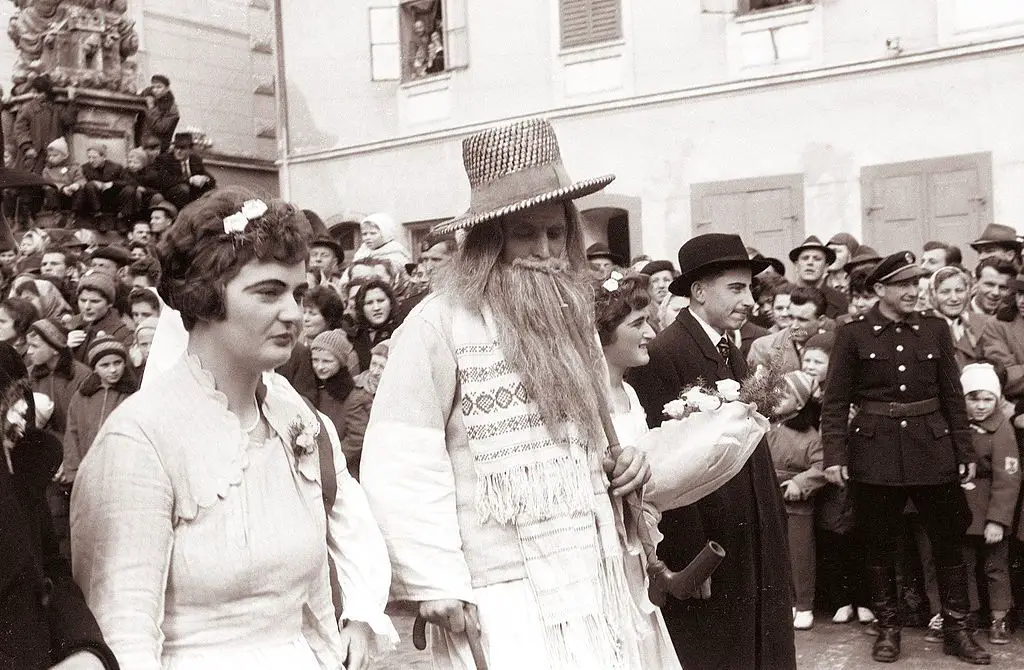
Wikimedia: Ptuj, 1962
So however you’ll be spending Pust this year we hope you set aside a few hours, or just raise a glass while wearing a favourite outfit, to celebrate having survived another winter, to feel part of a tradition that has gone on since time immemorial, and will continue long into the future.
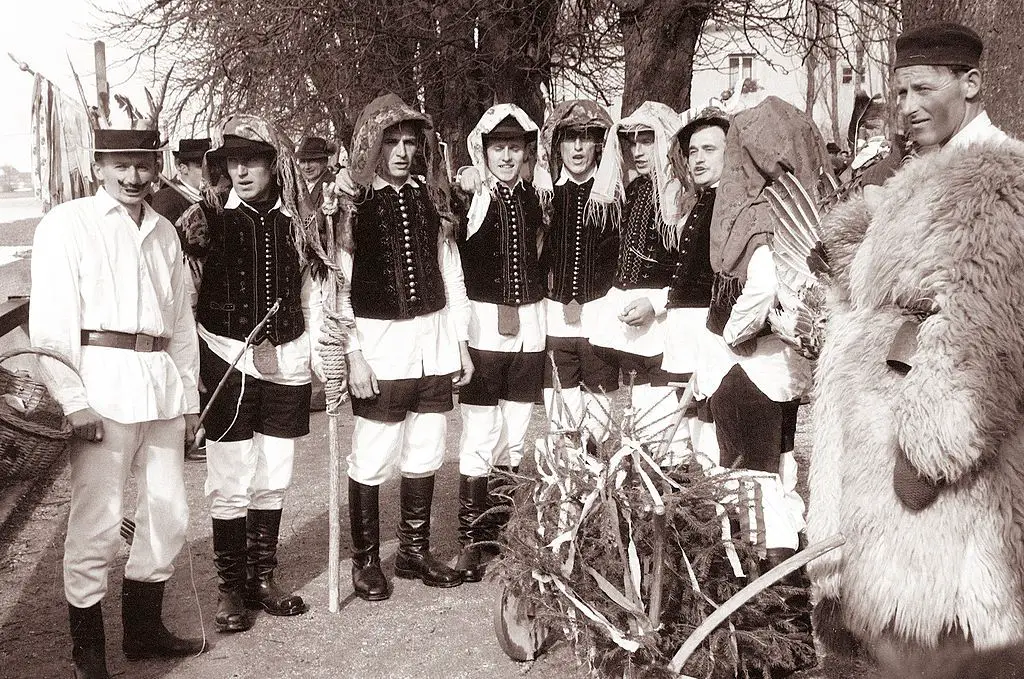
Wikimedia: Ptuj, 1962
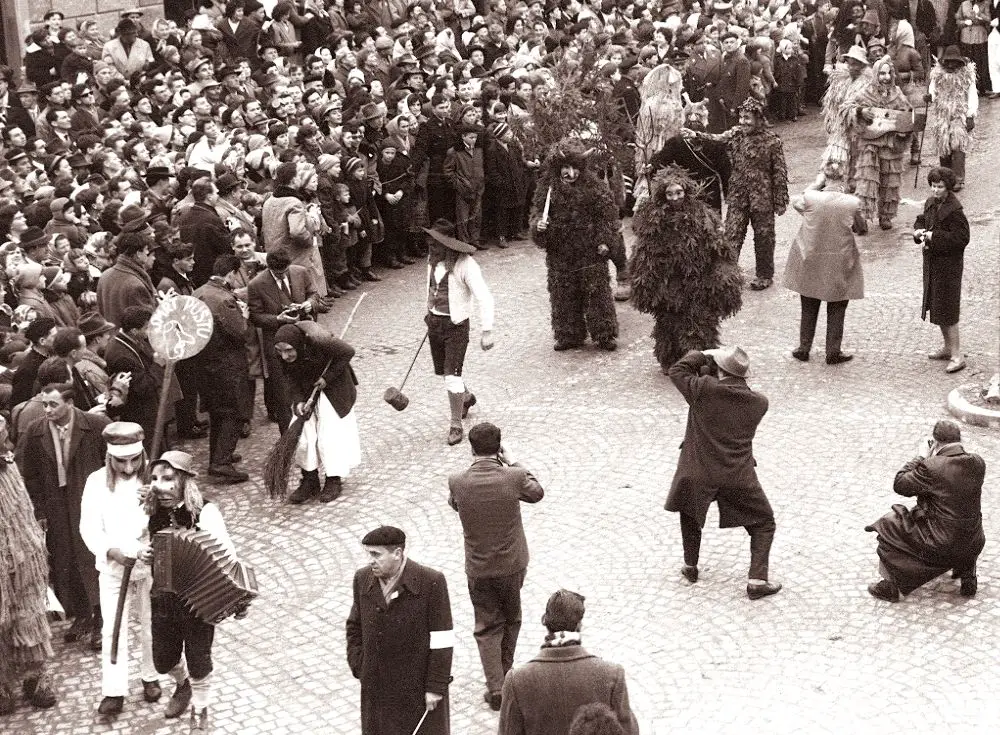
Wikimedia: Ptuj, 1962

